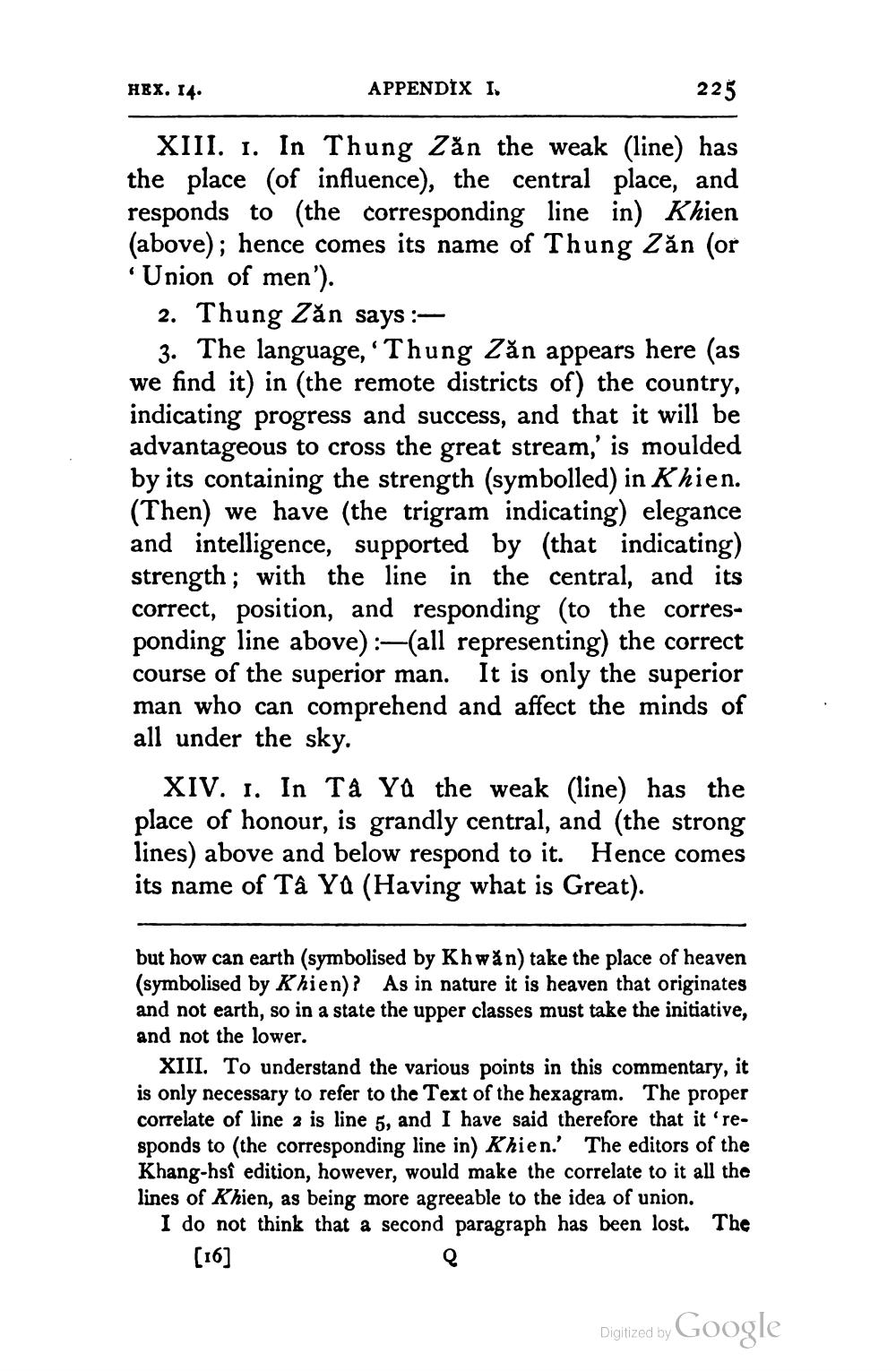________________
HEX. 14.
APPENDIX I.
225
XIII. 1. In Thung Zăn the weak (line) has the place (of influence), the central place, and responds to (the corresponding line in) Khien (above); hence comes its name of Thung Zăn (or 'Union of men').
2. Thung Zăn says :
3. The language, 'Thung Zăn appears here (as we find it) in (the remote districts of) the country, indicating progress and success, and that it will be advantageous to cross the great stream,' is moulded by its containing the strength (symbolled) in Khien. (Then) we have (the trigram indicating) elegance and intelligence, supported by (that indicating) strength; with the line in the central, and its correct, position, and responding (to the corresponding line above) :-(all representing) the correct course of the superior man. It is only the superior man who can comprehend and affect the minds of all under the sky.
XIV. 1. In Ta Ya the weak (line) has the place of honour, is grandly central, and (the strong lines) above and below respond to it. Hence comes its name of Ta Ya (Having what is Great).
but how can earth (symbolised by Khwàn) take the place of heaven (symbolised by Khien)? As in nature it is heaven that originates and not earth, so in a state the upper classes must take the initiative, and not the lower.
XIII. To understand the various points in this commentary, it is only necessary to refer to the Text of the hexagram. The proper correlate of line 2 is line 5, and I have said therefore that it 'responds to the corresponding line in) Khien. The editors of the Khang-hsf edition, however, would make the correlate to it all the lines of Khien, as being more agreeable to the idea of union. I do not think that a second paragraph has been lost. The
[16]
Digitized by Google




